Hi, I’m Faye, welcome! Here, we get weird, and wonderful, and sometimes a little naughty on the path to personal empowerment. And we do it through the language of movement. We move from prescriptive to Expressive, From obedient to Deviant. From copied to Embodied.
Subscribe for free to enjoy movement inspired essays & poetry, and occasional movement snacks. Or, join the community with a paid membership for access to twice weekly movement practices, plus seasonal workshop series to support you in embodying your purpose and passion.
I’d love to move with you!
Welcome back! In today’s exploration, we’ll go deeper into our human compass journey [link], exploring the realm of the kinesphere. Kinesphere is a term coined by movement maestro Rudolf Laban for the space around us that extends as far as we can reach in any direction, aka our personal space. We’ll also investigate how we can expand beyond the reach of our limbs to both create and take up more space — to inhabit more of our soulbodies.
Over the past several explorations we’ve looked at Choreosophia, the wisdom of circles, and Choreography, the writing and designing of circles. Today, we’ll contemplate Choreology.
Choreology is the logic or science of circles, which could also be thought of as geometry. But don’t be fooled! This geometry has much deeper implications than the geometry you learned in school. Choreology deals not only with the obvious visible forms of movement, but with the emotional and mental content communicated through the body’s movement.
We can think of the brain as simply part of the body - an organ whose function, like all the other parts of our body, is to process information. The brain is the central processing unit (CPU), which according to Wikipedia, who can explain it better than I can, “is the most important processor in a given computer. Its electronic circuitry executes instructions of a computer program, such as arithmetic, logic, controlling, and input/output operations.”
Essentially, our brain fundamentally makes experience possible. There would be no movement without the brain. And it turns out that, just like our phones and laptops, we can upgrade our body’s CPU. And we can do it through movement, specifically through play, which induces neuroplasticity, the ability of neural networks in the brain to change through growth and reorganization, aka rewiring the brain.
Our mind, then — our awareness — is the software layered atop the CPU that determines how we experience anything. A computer with no software is just a blank cursor on a screen.
As for what we experience? That’s where the soul —where consciousness — comes in. Consciousness is what makes us an organic, human machine, as opposed to something created in a factory.
The philosopher Thomas Nagel says, a creature is conscious if there is “something that it is like” to be this creature; an event is consciously perceived if there is “something that it is like” to perceive it.
Georg Wilhelm Friedrich Hegel wrote in his Phenomenology of Spirit that “spirit is consciousness”
We are not alive and conscious if we are not breathing. It seems to be no coincidence that the word ‘spirit’ comes from the Latin spiritus, meaning breath.
According to Sam Harris, consciousness is sentience, and it is what we are; it is not centralized to the brain. Our whole being is consciousness.
He says, “you are consciousness and its ever-changing contents, passing through various stages of wakefulness and sleep… Whatever else consciousness may or may not be in physical terms, the difference between it and unconsciousness is first and foremost a matter of subjective experience. Either the lights are on, or they are not…
The only thing in this universe that attests to the existence of consciousness is consciousness itself; the only clue to subjectivity, as such, is subjectivity. Absolutely nothing about a brain, when surveyed as a physical system, suggests that it is a locus of experience. Were we not already brimming with consciousness ourselves, we would find no evidence of it in the physical universe—nor would we have any notion of the many experiential states that it gives rise to. The painfulness of pain, for instance, puts in an appearance only in consciousness.”
Yeah. Take a sec with that.
As we begin to understand the body/mind/soul as one integrated power network of consciousness and its contents, rather than disparate pieces that sometimes get in sync with each other, a new language will reveal itself to us. A language in which each gesture, each step, each shape, each breath tells us something of our inner world.
Soulbody is the most basic way to describe Aristotle’s theory of hylomorphism, which echoes the above; he defines a soul as that which makes a living thing alive, and believes a soul is a form— a specifying principle or cause—of a living thing.
From Wikipedia: Consider the fact that a living body is constantly replacing old matter with new. A five-year-old body consists of different matter than does the same person's seventy-year-old body. If the five-year-old body and the seventy-year-old body consist of different matter, then what makes them the same body? The answer is that the same soul has been animating matter into that person's body. Because the five-year-old and the seventy-year-old bodies share a soul—that is, the person's life—we can identify them both as the body. Apart from the soul, we cannot identify what collection of matter is the body.
The soul is a person’s life. Steep on that for a moment. Breathe it in.
Martha Graham says it this way: “There is a vitality, a life force, an energy, a quickening that is translated through you into action, and because there is only one of you in all of time, this expression is unique. And if you block it, it will never exist through any other medium and it will be lost. The world will not have it. It is not your business to determine how good it is nor how valuable nor how it compares with other expressions. It is your business to keep it yours clearly and directly, to keep the channel open.”
When we perceive ourselves as hylomorphic beings, sentient soulbodies witnessing and experiencing, to our own degree of awareness, the contents of consciousness, it is inherent that our movement reveals the contents and quality not only of our physical, but of our cognitive and our spiritual/emotional worlds, because they are inextricably intertwined; breath mingling with muscle and fascia and blood and sensation in an ever-changing body of consciousness. What a gift. These worlds we tend to believe we cannot see are hiding in plain sight, if only we be here — be present — as we move our bodies.
Alright, let’s make one final circle round the body, back to Choreology - the coming together of the physical, mental, and emotional (body, mind, and spirit). When we express this coming together through our movement — our way of being in the world — we have what we might call embodiment.
Alright, enough talk. Let’s see what arises as our soulbodies explore the kinesphere.
After your practice, take a moment to contemplate :
Did you get a sense of the overall quality of your movement? Curious? Fearful? Joyous? Contracted? Did any characters, emotions, or imagery emerge? Can you describe these in concrete detail? Color, shape, texture, size, weight? Spend 5-10 minutes jotting down any details or insights that occurred to you during your practice.
Notice, too, how you respond to your insights. Is there anything you’re stopping yourself from acknowledging? Anything particularly exciting? Anything you want to play with further? If there is something in particular you’d like to play with, set an intention to tune back into that quality throughout your days.
As always, I invite you to share any insights in the comments, or if you prefer to remain private, send me a direct message!
•••••••••


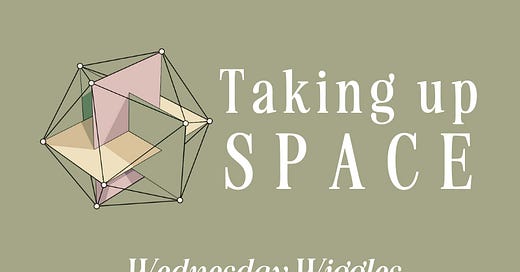





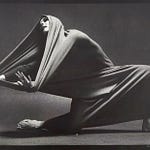
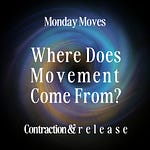
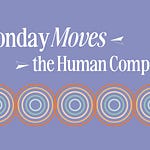
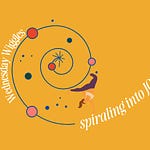

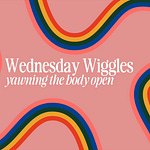
Share this post